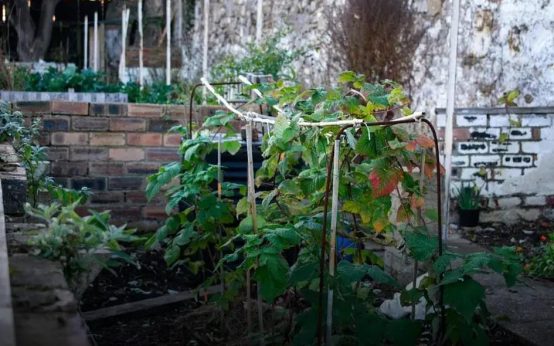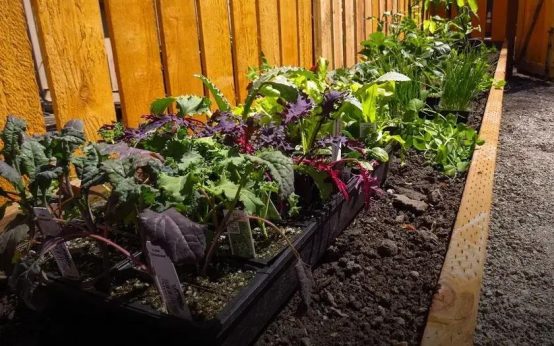Curious about the differences between perennials and annuals? Discover their unique characteristics and see how they can enhance your garden. Whether you’re a seasoned gardener or a beginner, understanding these plant types is crucial. Dive into the detailed comparisons throughout the article to make an informed decision for your garden’s future.
Understanding Perennials
Perennials are remarkable plants that live for more than two years, continuously offering beauty and structure to gardens. Unlike annuals, which complete their life cycle in a single season, perennials boast longevity, returning year after year and becoming a permanent fixture in landscaping.
These plants often have a period of dormancy during the colder months and will reawaken in spring, growing back from their rootstock. This trait makes them particularly valuable in temperate climates where winter can be harsh. While their bloom period may not be as extensive as that of annuals, perennials are often prized for their diverse forms, textures, and foliage that can sustain garden interest beyond their flowering time.
Another critical aspect of perennials is their need for well-planned planting. As they stay in the ground for many years, choosing the right location that offers proper sunlight, soil conditions, and space is essential. Some popular examples of perennials include peonies, hostas, and daylilies, each bringing its charm and vibrant colors.
Exploring Annuals

Annuals add a burst of color and vibrancy to your garden. They complete their life cycle in one growing season, from seed to flower and back to seed. This means you have to replant them each year. Popular annuals include marigolds, zinnias, and petunias.
These plants are favored for their continuous blooming throughout the summer, ensuring your garden remains colorful and lively. Unlike perennials, annuals do not return the following year from roots or bulbs, offering you the chance to experiment with new designs and colors annually.
An important consideration for gardeners choosing annuals is their need for consistent care. They generally require more watering and fertilization compared to perennials. Despite this, their rapid growth and quick rewards make them popular among those who enjoy frequent garden changes.
Furthermore, annuals are often less expensive than perennials, allowing for cost-effective planting every growing season. Due to the wide variety of annuals, they can be easily mixed or matched for different visual effects and to fit various garden themes.
Key Differences Between Perennials and Annuals
When comparing perennials and annuals, it’s crucial to understand their distinct growth patterns. Perennials are plants that live for more than two years, enduring different seasons and regrowing each year from the same root system. In contrast, annuals complete their life cycle in a single growing season, requiring replanting each year.
One significant difference lies in growth cycles. Perennials typically have a dormancy period where they conserve energy, while annuals focus on rapid growth and flowering since they need to reproduce within a few months.
The lifespan of these plants plays a major role in garden planning. Perennials, once established, return each spring, providing a reliable backdrop of blooms. They might take longer to establish in their first year but prove their worth with longevity. On the other hand, annuals require annual planting, offering flexibility to change garden aesthetics regularly.
Their maintenance requirements also differ. Perennials often demand less frequent attention in the long term but may need initial setup care. Annuals, with their short-lived cycle, may need consistent watering, feeding, and deadheading to prolong flowering throughout the season.
Furthermore, the variety in flowering is notable. Perennials usually have a specific blooming period each year, while annuals, with their determined life span, are often bred to bloom continuously until weather conditions become unfavorable.
Lastly, considering soil and space requirements, perennials might necessitate well-prepared soil that supports longer root systems, while annuals might need well-drained soil to support rapid, extensive blooms. Gardeners often mix both to enjoy a combination of stable, perennial foundations with vibrant, seasonal annual displays.
Benefits of Perennials vs. Annuals

When it comes to choosing between perennials and annuals, understanding their unique benefits is crucial. One of the main advantages of perennials is their longevity. They return year after year, gradually expanding and filling your garden with consistent blooms. This means less time and money spent on replanting and maintaining your garden, making it a more economical choice in the long run.
On the other hand, annuals can offer vibrant colors and dramatic changes to your garden scenery. They provide a wonderful opportunity to experiment with different garden designs and color schemes each year. Because annuals complete their life cycle in one season, they tend to bloom more profusely, offering a spectacular show of flowers that can last from spring until the first frost.
Perennials can improve soil health over time due to their deep root systems. These roots help prevent soil erosion and allow for better water absorption, making them beneficial for sustaining healthy garden ecosystems. Meanwhile, annuals are perfect for adding quick pops of color to areas that need an immediate lift. Their fast growth means they can fill gaps in garden beds efficiently and effectively.
Another benefit of perennials is their ability to provide habitat for wildlife. Birds, insects, and other creatures often find refuge among perennial plants, which can promote biodiversity and create a thriving garden environment. Conversely, annuals allow gardeners to address seasonal challenges, such as pests or weather conditions, by choosing plant varieties best suited for the specific situation each year.
Lastly, mixing perennials and annuals can offer the best of both worlds, creating a dynamic, ever-changing garden. Together, they can enhance your garden’s appearance and health, ensuring you enjoy a beautiful and sustainable outdoor space.
Choosing the Right Type for Your Garden
When selecting between perennials and annuals for your garden, understanding your specific gardening needs and goals is crucial. Consider your climate and how much time you want to invest in maintaining your garden. While perennials can offer long-term beauty with less frequent planting, annuals provide vibrant and diverse color changes each year.
Determine the amount of sunlight your garden receives, as different plants thrive under varying light conditions. Assess your soil type and drainage, as certain plants have specific needs for optimal growth. For a low-maintenance option, perennials are ideal. They need less disruption once established. If you’re looking for versatility and experimentation, annuals let you change colors and styles annually without long-term commitment.
Think about your design objectives. Are you envisioning a garden rich in ever-evolving colors with annuals? Or do you appreciate the stability of perennials gradually enhancing your landscape? Consider combining both types: perennials can provide a steady backdrop, while annuals add pops of seasonal color.
Focus on creating the right balance based on your preferences and environment. Incorporating both can diversify your garden’s appearance and add resilience to weather changes. Your garden’s location, aesthetic goals, and the time you dedicate to care will guide your decision in choosing the right types.


 Tips for Growing Tomatoes That Actually Produce Fruit Easily
Tips for Growing Tomatoes That Actually Produce Fruit Easily  Companion Planting: Discover Plants That Thrive Together
Companion Planting: Discover Plants That Thrive Together  Starting a Vegetable Garden: Top Easy Crops to Begin
Starting a Vegetable Garden: Top Easy Crops to Begin